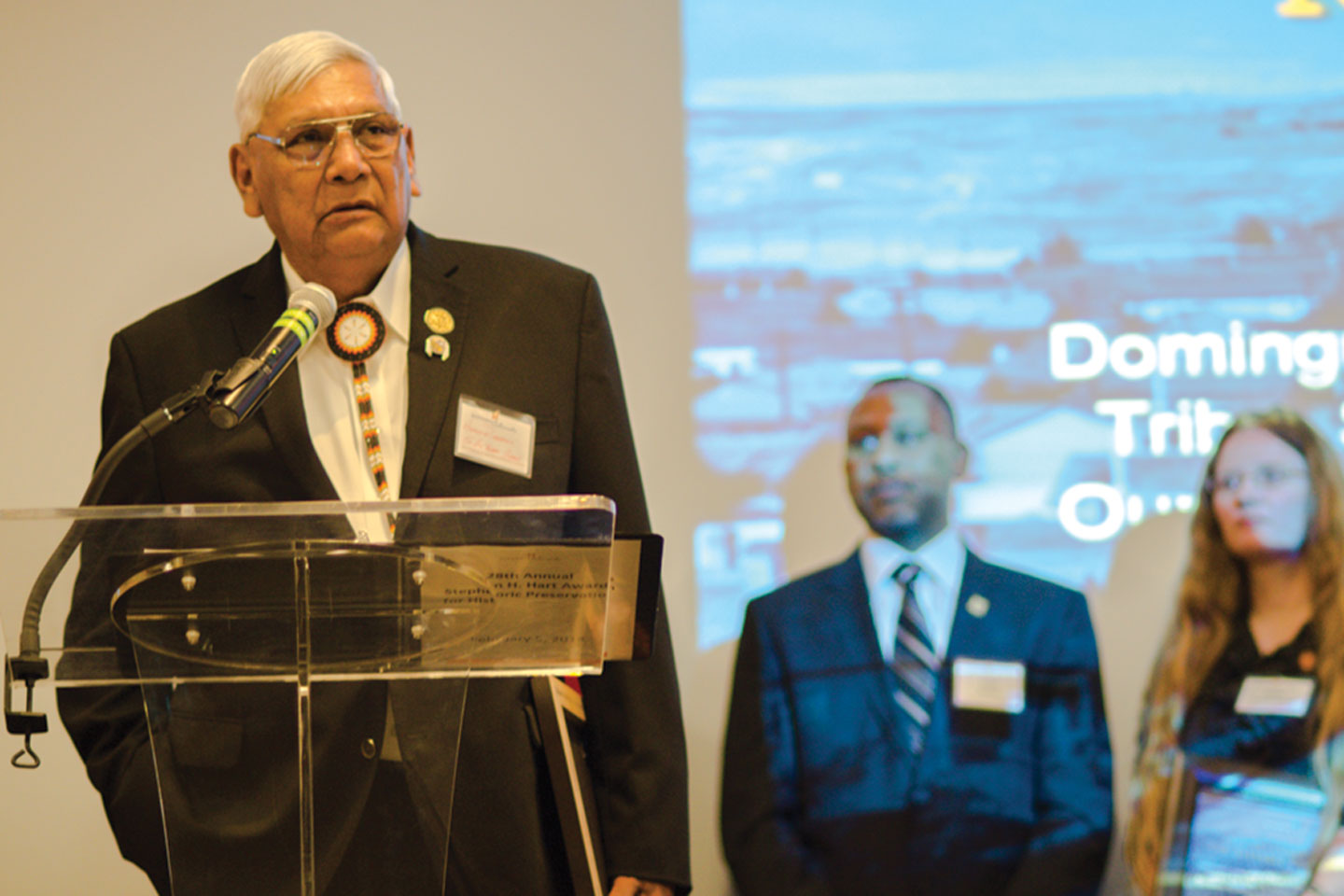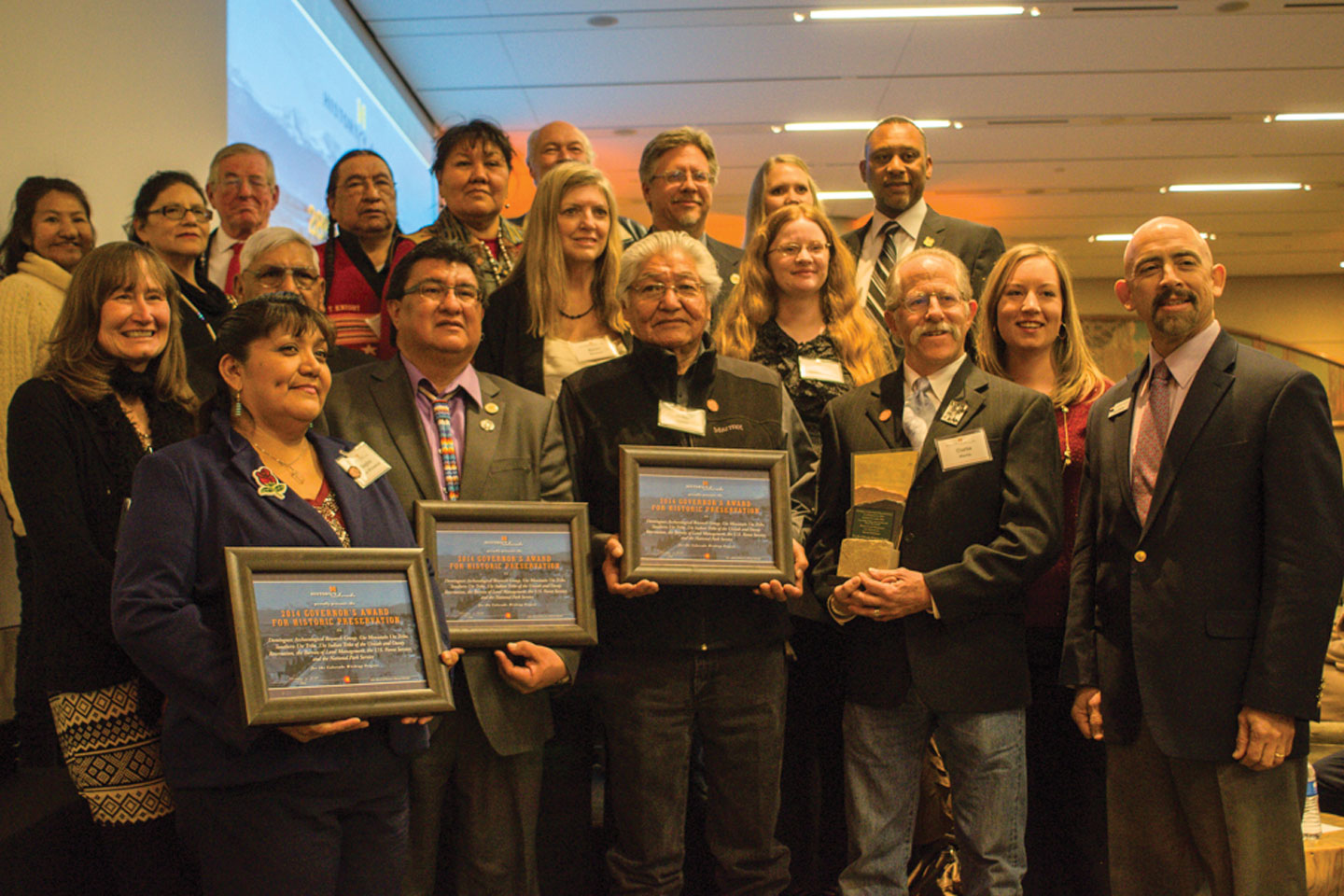Each year, archaeological and historic preservation successes in Colorado are recognized at the Stephen H. Hart Awards Ceremony.
This year, the Southern Ute Indian Tribe was chosen to be one of the honorees at the 28th annual ceremony at the History Colorado Museum in downtown Denver on Wednesday, Feb. 5.
The Southern Ute Tribe, in conjunction with the Ute Mountain Ute Tribe and Northern Ute Tribe, received the Governor’s Award for Historic Preservation, acknowledging the tribes’ achievements with the Colorado Wickiup Project, a program that conducts context development, data assessment, and comprehensive field documentation of indigenous sites in the state.
Ed Nichols, CEO of History Colorado, opened the ceremony with an introduction to the crowded room.
“This is a time where we can indeed celebrate what’s been done this year in the preservation field of Colorado,” he said. “We’re proud to partner with many of you and your archaeological preservations through the History Colorado preservations program.”
Present in the room were representatives of various departments who had a hand in the preservation of statewide sites.
“I am pleased that we have several state legislators with us to help celebrate these honorees,” Nichols said. “The people and projects we are recognizing were chosen because they helped create Colorado’s future while at the same time honoring the past.”
The Dominguez Archaeological Research Group, U.S. Bureau of Land Management, U.S. Forest Service, and the U.S. National Park Service, which aided with the Colorado Wickiup Project, were also commended.
Southern Ute Indian Tribal Councilman Howard D. Richards Sr. gave a thankful statement upon receiving the award.
“On behalf of the Southern Ute tribal membership, a lot of [thanks] goes out to the people that made this possible,” he said. “It took a lot of hardship and determination. … I bring wishes from our people back home, and I want to thank all of those individuals who made it happen.”
Manuel Heart, chairman of the Ute Mountain Ute Tribe, expressed his gratitude to the audience.
“It’s a privilege and honor to accept the Stephen H. Hart Award, and to be notified that this project was chosen for the Governor’s Award,” he said. “We’re the oldest living residents, the Ute people. Our ancestors have come a long way, and today we still have a ways to go. Preservation is key to who we are and where we come from.”
Since its beginning in 2004, the Colorado Wickiup Project has identified more than 330 “wickiup” sites in the state including indigenous shelters, tree platforms, and bush fences. A majority of these sites are located in western and northwestern Colorado on the Uncompahgre Plateau and along the White River and Colorado River drainages. Most of the surviving features are associated with Ute culture and are known to be the only remaining ephemeral architectures of the state’s native peoples.
Nichols expressed his stance on recognizing this project.
“It’s a project where there’s so much effort spent on it but so little understanding of it across the state,” he said. “I am so pleased that we are able to award them this evening.”




